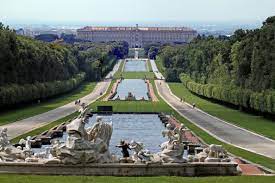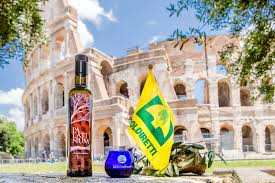
The Archaeological Park of the Colosseum, which encompasses a vast green area of 40 hectares (just under 100 acres) in the heart of Rome, is embarking on its first olive harvest. The Park, which includes the Roman Forum and the Palatine Hill, has 189 olive trees - some venerable “Patriarchs” over a hundred years old, concentrated mainly on the southern slopes of the Palatine Hill, where Rome's emperors had their residences.
The appointment to help with the olive harvest is on the morning of the 28th October 2021, when an olive press will be set up in the in area around the historic Arch of Titus. Organizers expect to produce 120 litres of extra virgin olive oil, which will be marketed under the name “Palatinium” with a label inspired by a fresco design in the Casa dei Grifi on the Palatine.
The initiative is organized by Coldiretti (Confederazione Nazionale Coltivatori Diretti - Italy's major organization representing agricultural entrepreneurs) and the Op Latium organization of olive producers in Lazio.
The Archaeological Park of the Colosseum, however, also produces honey. Some 14 kilos of “Ambrosia del Palatino” were successfully produced this year from the hives positioned near the House of Romulus in a quiet corner of the Palatine Hill rich in variegated plant life.
Next step, according to Park Director Alfonsina Russo, will be wine making from vines planted amidst the remains of the glory of Ancient Rome.
MARGARET STENHOUSE
Info: Tel. +39.06.69984443 www.parcocolosseo.it www.coldiretti.it
After a lengthy and complicated restoration, begin in 2019, Michelangelo's last “Pietà”, known as the “Bandini Pietà” after its first owner, Archbishop Francesco Bandini, is now on show again in the Museum of the Opera of the Duomo in Florence.
According to Vasari, writer of the famous “Lives” of the Renaissance artists, Michelangelo was so dissatisfied with the quality of the marble he was using that he tried to destroy the sculpture. Fortunately, Bandini rescued it and commissioned an artist to tidy it up. It is now considered one of the jewels of the Opera del Duomo collection.
The lengthy and delicate restoration, financed by the Friends of Florence Foundation, revealed that it was not carved in Michelangelo's preferred material, which was the high quality marble of Carrara, but that the enormous 3-ton block had come from the Medici quarries at Seravezza near Lucca. Michelangelo, in fact, had objected that the marble was too hard and gave off sparks when he applied his chisel. Restorers found, in fact, that the stone contained pyrite.
The Pietà, which the artist originally intended to grace his own tomb, is an unusual triangular composition, with a hooded Nicodemus leaning protectively over the body of the dead Christ, which is supported by the Virgin Mary and – unusually – by Mary Magdalene. Michelangelo was into his seventies when he was working on the sculpture and the suffering face of Nicodemus is believed to be his self-portrait.
Info: Tel. +39.055223064 www.friendsofflorence.org https://duomo.firenze.it
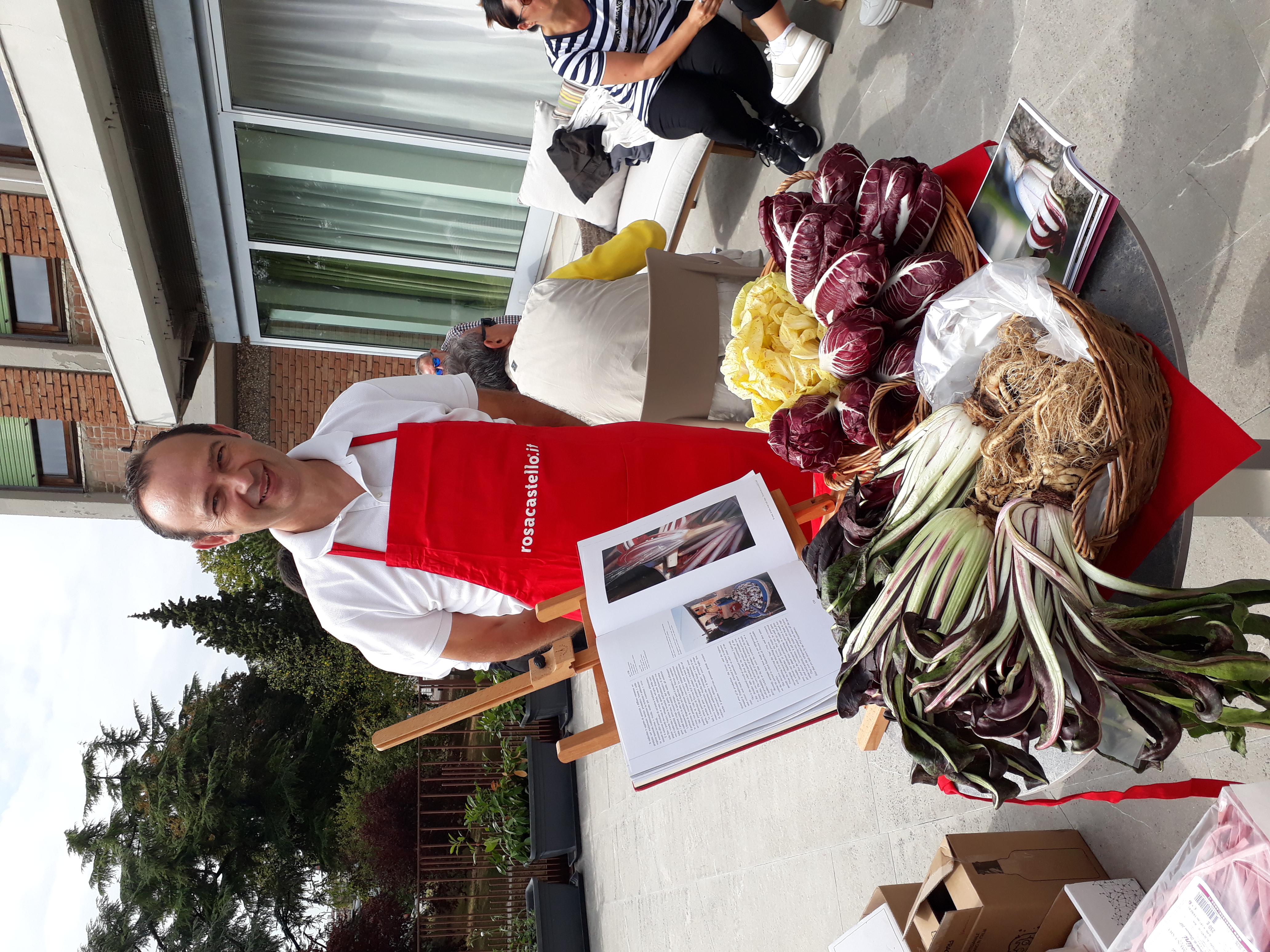
The Chicory plant is probably the most underestimated botanical treasure, with an astounding range of widely differing varieties, ranging from the humble little roadside plant with starry blue flowers to the bitter-tasting red-leaved winter salad.
Less known except to gourmets and foody experts, however, is the queen of chicories – the Radicchio Rosso di Treviso (the Red Chicory of Treviso), cultivated exclusively in the fields of 24 municipalities in the Veneto Region and decorated with the exclusive IGP (Indicazione Geografica Protetto) denomination that guarantees not only the place of production but also its unique properties.
The Treviso chicory undergoes what can only be described as a magical transformation before it reaches the market place. For a start, the seedlings are planted in the autumn and harvesting only begins after the fields have suffered a couple of frosts. Uprooted and tied in bunches, the roots are suspended and left for a few weeks dangling in the pure running water from the Dolomite mountain springs. Next stage is the crucial “bleaching”, where the plants are kept in darkness for another couple of weeks. The result is an amazing metamorphosis. The leaves have become elegantly curving natural compositions in variations of white, crimson and purple.
It is not surprising that the Treviso Red Chicory and its variations: the early variety, the late variety and the Castelfranco variation (which is a different shape and colour) are considered gastronomic masterpieces created by man and Nature.
The quality of the three products is guaranteed by the Consortium for the Protection of the Radicchio Rosso di Treviso IGP and the Variegato di Castelfranco IGP, with headquarters in Quinto di Treviso, some 25 kilometres from Venice.
M. STENHOUSE
Info: Tel. +39.0422.486073 www.radicchioditrevisi.it consorzio@radicchioditreviso.it
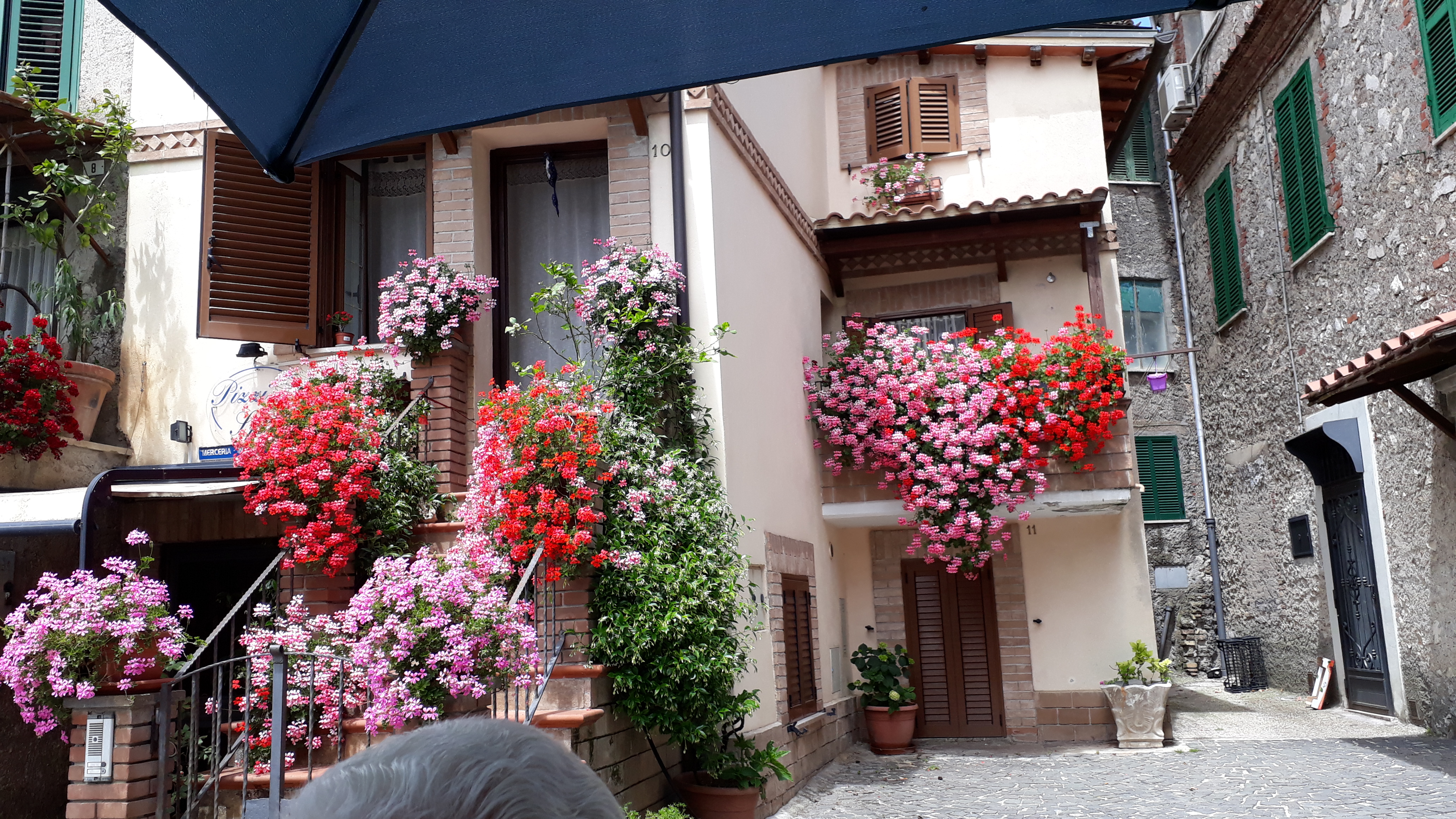
The Covid pandemic has made some changes to Italian holiday habits. Whereas tourists have been avoiding the major art cities, the small historic “borghi” (villages with under 5000 inhabitants) have been enjoying a visitor boom.
The “borghi” are charming, tranquil destinations, complete with their own historic buildings, works of art, festivals, friendly retreats and splendid surrounding scenery, which constitute just under 70% of Italy's urban reality. Most of them are little known and are by-passed by the mass tourism market.
The “Progetto Borghi” (Historic Village Project), a digital forum dedicated to the regeneration of Italy's little towns, promoted by the Host B2B organization, was launched recently in order to encourage the above trend in increasing visitor numbers.
Backed by important partners such as the Italian Touring Club, the Association of the Authentic Borghi of Italy, the Association of Responsible Tourism, and the Association of Seaside Borghi, as well as the Most Beautiful Borghi of Italy, the project is also supported by the Universities of Calabria, Messina and Cagliari.

After a seven-year closure for restoration and updating, Rome's Planetarium is due to reopen end 2021- early 2022, endowed with a brand new, state-of-the-art system of digital projectors that will replace the old optical projectors and give visitors spectacular close-up views of the surfaces of the Moon, Mars and areas of the Earth.
The original Planetarium was situated within the archaeological complex of the Baths of Diocletian, near Rome's central railway station. Opened in 1928, it was one of the world's first star-gazing installations. When the ancient building proved inadequate, the Planetarium was moved to the EUR district in 2004 and set up inside the spacious Museum of Roman Civilization along with a new,
specially created Museum of Astronomy.
Italy now has Planetariums in all major cities, but only Rome and Turin have the added facility of an astronomical museum attached.
Info: Tel.+39.06.82077.1 www.planetarioroma.it www.zetema.it

A report on a promising reduction in Italy's share of Co2 emissions was presented during the recent All4Climate conference in Milan, held in preparation the UN Climate Change Conference, programmed for the 1-12 November 2021 in Glasgow, Scotland.
The positive news is that over the past ten years, Italy has been steadily gaining more trees. The country's forested areas have expanded and now occupy a total 11 million hectares, equivalent to just over a third of the entire national territory. These trees meanwhile have been hard at work absorbing the harmful Co2 emissions.
According to the latest Italian National Forest Inventory (INFC) report, the regions which have become “greener” are Tuscany, with woods covering 10.4% of its territory, followed by Piedmont and Lombardy. Another positive aspect is that Italy's forests are not confined to the mountains but they are also spreading over hilly and coastal regions, largely due to the abandonment of agricultural land in less accessible or fertile areas.
Italian woods are also rich in biodiversity, with 180 different species of plants censored. Oaks, ilex, beeches and hornbeam are the most prevalent, along with larches and various varieties of pines.
Info: www.sian.it
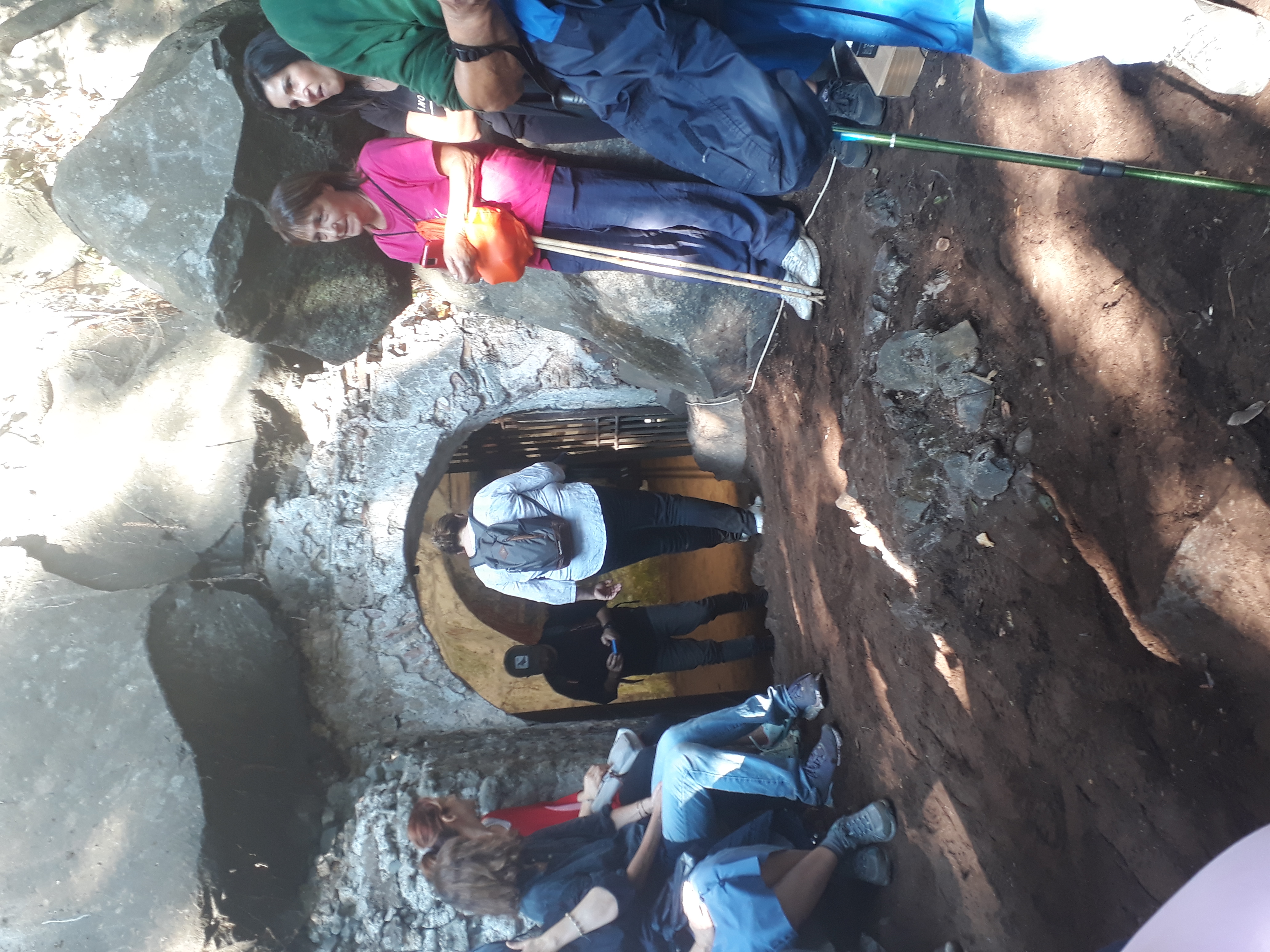
The small town of Nemi in the Castelli Romani area near Rome, has re-opened the ancient Hermitage dedicated to St. Michael Archangel, situated in a cavern in the cliffs high above Nemi crater lake.
The Hermitage is believed to date back to the 6th century AD and is mentioned in a papal decree of 1183 in which Pope Lucius III transferred the possession of the remote holy site to the monks of Sant'Anastasio di Aquas Salvias in Rome. In a state of abandonment for many years, hidden in undergrowth and virtually inaccessible, Nemi Town Council has now created a new Nature Trail along the cliffside so that hardy walkers are able to visit this interesting site, decorated inside with wall paintings of St.Michael, the Madonna and child and a surprising depiction of Nemi village of bygone days with its distinctive watchtower.
The Nature Trail was inaugurated on the Feast of St. Michael with the first mass to be held in the cave church for 250 years and a re-enactment of the solemn religious processions that took place annually in the past,
Nemi Mayor Alberto Bertucci, declared that the opening of the Hermitage was only one of several initiatives underway to increase tourism attractions to Nemi, which include improvements to the important archaeological site of the Temple of Diana on the lakeside.
Info: www.confraternitadinemi.org
Text & photos M. STENHOUSE

As part of its anti-Covid campaign, Italian railways Trenitalia continue to distribute free safety kits to all passengers on board its Frecciarossa and Frecciargento (Red Arrow and Silver Arrow) trains. The kits consist of a disposable paper bag containing a face mask, a sanitizing gel wipe and a carton of mineral water. First introduced in May 2021 when it became evident that the pandemic would continue into and over the summer, the FS (Ferrovie dello Stato - State Railways) introduced the kit as part of its customer care service. There are 38 Freccia trains operating throughout Italy.
All carriages and seating continue to be disinfected regularly at stations.
Info: www.trenitalia.com

Last chance to catch up on the exhibition “Tra Dante e Shakespeare: il Mito di Verona” (From Dante to Shakespeare: the Myth of Verona) which sets out to highlight the particular attraction that the city of Verona had on Europe's two major poets.
Dante spent the first period of his exile from the Florentine state in Verona and expressed his gratitude for the hospitality he received in his “Paradise, XVII, 70”. We don't know whether Shakespeare, on the other hand, ever visited Verona (or Italy) during the years of obscurity when no documentation regarding his life has come to light. However, he set two of his plays in the “Fair City”: “Two Gentlemen of Verona” and the world's most famous love story - “Romeo and Juliet”, inspired by a 16th century writer Luigi da Porto.
The exhibition contains a selection of over 100 paintings, sculptures, illuminated manuscripts and documents as well as original books from the Verona public library and various museums, spanning a period from the 14th to the 19th century. Among the important works on show there are three rare drawings by Botticelli on loan from the Kupferstichkabinett (Berlin), depicting “Dante and Beatrice. Paradise II”.
The exhibition is closes on the 3rd October 2021.
Galleria d'Arte Moderna Achille Forti. Tel.+30.045.8001903
The favourite wine of the Bourbon monarchs of Naples is making a come back after several centuries of oblivion. The San Silvestro vineyards once covered 5 hectares of land, bordering on the Palace of Caserta royal gardens, but had been abandoned and left to grow wild for over a century. Three years ago Mauro Felicori, the then curator of the royal Palace, decided to restore the vineyards.
The contract was awarded to the local Tenuta Fontana wine-growers, who are about to enjoy their first harvest, from which they hope to produce an initial thousand bottles of both red and white wine. The new, organic vineyard has been planted with the traditional native grape, known as pallagrello, which was one of the grape varieties selected for the original vineyard in the 18th century by the celebrated architect Vanvitelli, responsible also for the Palace design.
The vineyards border on the nature reserve of the Forest of San Silvestro, a WWF conservation area.
Info: www.tenutafontana.com www.reggiadicaserta.beniculturali.it
<< Previous ... 2 ... 4 ... 6 ... 8 ... 10 ... 12 13 14 15 16 17 18 19 20 21 22 23 24 25 26 27 28 29 30 31 32 ... 34 ... 36 ... 38 ... 40 ... 42 ... 44 ... 46 ... 48 ... 50 ... 52 ... 54 ... 56 ... 58 ... 60 ... 62 ... 64 ... 66 ... 68 ... 70 ... 72 ... 74 ... 76 ... 78 ... 80 ... 82 ... 84 ... 86 ... 88 ... 90 ... 92 ... 94 ... 96 ... 98 ... 100 ... 102 ... 104 ... 106 ... 108 ... 110 ... 112 ... 114 ... 116 ... 118 ... 120 ... 122 ... 124 ... 126 ... 128 ... 130 ... 132 ... 134 ... 136 ... 138 ... 140 ... 142 ... 144 ... 146 Next >>


